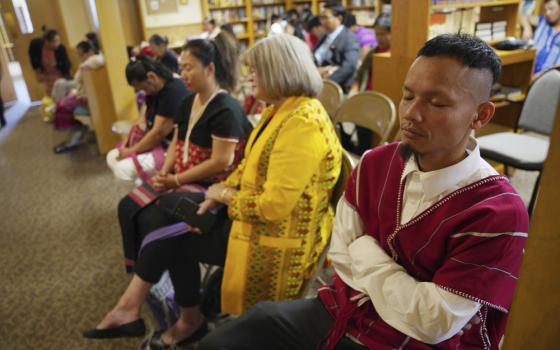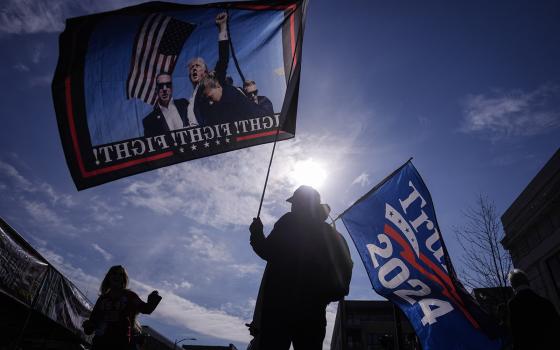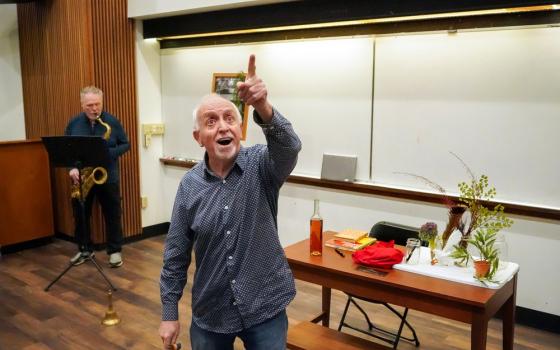On this day 150 years ago, Georgia seceded from the Union.
Georgia couldn't wait to go to war. Already on January 2, 1861, three months before Fort Sumter, the governor had ordered the state's militia companies to seize Fort Pulaski. The Catholic chaplain was Fr. Peter Whelan, an Irishman who was in charge of the Catholic Boys Orphan Asylum in Savannah.
The Georgia militiamen held the brick fort until April, 1862, when the Federals bombarded it. After two days the Confederate troops surrendered. The men and their chaplain were taken to prisons in New York.
Click here to read about Fr. Whelan's activities while in prison.
Back in Georgia after a prisoner exchange, Fr. Whelan was named chaplain for all Confederate forces in the state. In June, 1864, he was assigned to Andersonville to minister to the Union soldiers imprisoned there.
Click here to read about the saintly priest's ministry to the men in "the living hell". (Scroll down halfway to see a picture of one of the "Andersonville wrecks".)
Fr. Whelan of Georgia was only one of many Catholic priests who served as Civil War chaplains. Click here to see a famous 1877 chromolithograph of Fr. Peter Cooney, CSC, saying Mass for Indiana troops, part of the Army of the Cumberland. The idealized picture shows a field Mass on Easter Sunday, 1864, when the Atlanta Campaign was about to begin.
Another chaplain from Notre Dame was Fr. William Corby, CSC. This statue at Gettysburg depicts Fr. Corby, a chaplain of the Irish Brigade, giving general absolution to the men before the battle.
Corby would later serve twice as President of Notre Dame. His book, Memoirs of Chaplain Life: Three Years Chaplain of the Famous Irish Brigade, "Army of the Potomac", contains his own story and the stories of other chaplains.
In the chapter on Fr. Constantine Egan, OP, there is an account of Egan's ministering to two of five soldiers condemned to be shot for desertion. He heard the confessions of the two Italian Catholics and said Mass for them. A rabbi was there for the soldier who was Jewish and a Methodist preacher for the two who were Methodist.
A few weeks later, Egan was asked to minister to another man about to be shot. "The prisoner was placed in the ambulance, and I took my place by his side. During the sad journey, of about two miles, we were occupied saying the rosary and litanies, the poor prisoner praying with much fervor during the short time he had to live.
"Arriving at the place of execution, we saw a coffin ready and a grave prepared for the reception of the poor soldier's remains, and the whole of the First Army Corps drawn up in a position to witness the prisoner's death. We got a few minutes to pray, and before the white bandage was placed over his eyes, the prisoner stood up, and in a steady voice said: 'I ask pardon of all whom I have offended; I forgive every one who has offended or injured me; boys, pray for me.'
"The officer then read the death-warrant, and placing the white bandage over the prisoner's eyes, gave the order to the firing party: 'Make ready! Aim! Fire!' The poor soldier fell on his coffin, and death was almost instantaneous."
Some other famous Civil War chaplains:
Fr. John B. Bannon, who persuaded Pope Pius IX to send a letter to the "Illustrious and Honorable Jefferson Davis, President of the Confederate States of America."
Fr. John Ireland, later Archbishop of St. Paul.
Fr. Bernard McQuaid, later Bishop of Rochester.
Fr. Abram J. Ryan, the Poet-Priest of the South. "The Conquered Banner" was his most famous poem.



